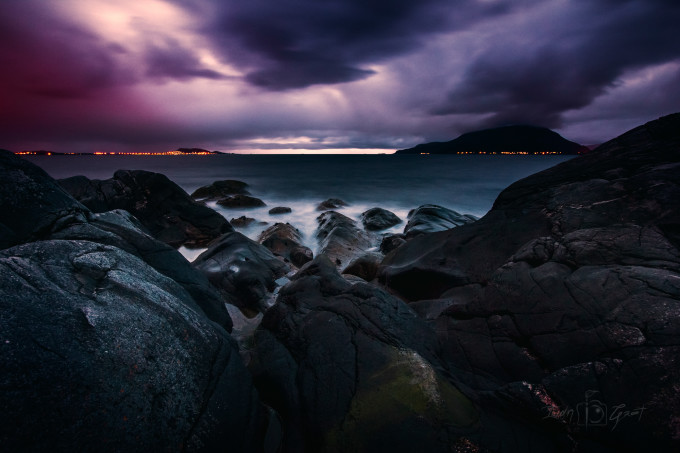
for landscapes, astroscapes, northern lights, nature, seascapes.
This is the third Shot I’m uploading that Ive used two different White Balances for the HDR. Another shot https://500px.com/photo/108748239/ I didn’t think would get any great response but it climbed to the first page of landscapes. So I’ll see how this one does. Sometimes I want a shot to be HDR but only have one exposure for blending, and another darker one that doesnt fit as much, so then I processed the same image twice one lighter with a certain White Balance and then the other one with a different brightness and White Balance. And I really like this result.
The summer solitice has paced and the nights are getting ever so slightly darker and bring me excitement to soon see the northern lights and stars of the night sky for another season of the night.
The thing I like about this Island is the many cool compositions you can get all so close to one another, I never run out of compositions I love. you got great tidepools, vegetation, old architecture, bunkers, waves, ocean, rough and smooth rocks, cliffs, caves, and an impressive wildlife for such a small island. and how central it is for the view of all my neighboring areas with great views, and how little impact from civilization on it.
All images by Iwan Groot. Used with permission.
“‘I’ll shoot it later'” usually means you won’t get shot; on the way back you might be chasing something, running from weather, too tired, the light might be worse, who knows what will make you not get the shot, but procrastinating on a small trip will usually leave it uncaptured.” says photographer Iwan Groot about his landscape photography. Indeed, he’s always been about timing and ensuring that he can get the shot. It’s the most simple explanation for the incredible work in his portfolio.
Iwan had been shooting for many years and it started when he learned to paint. He’s also been interviewed on the site before.
Editor’s Note: Iwan, as a young photographer, is eagerly looking for work. His work can be licensed here and you can order prints from him here. But more than that, he’s also available for hire to shoot. He’s also working on creating photoshop actions, brushes and tutorials.
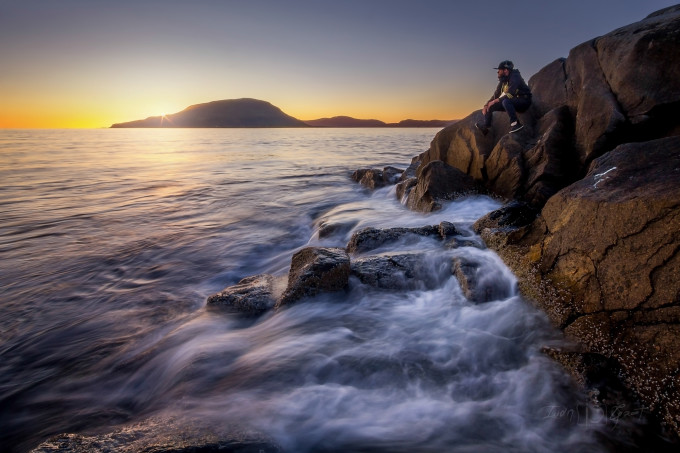
All of the other versions of sequence and scene made good ratings,
In this version I took the best of the three other versions, and combined them and used another flow that are not in the other shots.
Also in this case I made things smoother, and sharper while maintaining very low noise.
Nowadays the the sun is making things dark around 9 and it is making me look forward to the light of summer with long days and a bit of warmth, and sunshine but it is bittersweet and I will miss the Stars, planets, milky way and Auroras dancing and filling the dark night sky. I like the light of summer which I find is warm but I love the options that Autumn, Winter, and Spring bring.
This shot is on the edge of Bjørnøya where you have a good view of vigra, lepsøya and haramsøya, I love this little island that has so much untouched nature, and embedded with WWII bunkers.
Phoblographer: When you go about scouting for locations and shooting landscapes, you’re obviously inspired by places and get some sort of creative vision in mind that you want to achieve in your final capture. So how do you think clearly between balancing the artistic side of your brain and the technical side of your brain when you’re creating these images?
Iwan: I have installed Magic Lantern onto my Canon 550D which allows me to use the camera software as a intervalometer, HDR bracketing and much more. This allows me to stress a little less about the technical side.
I shoot in “Full Manual” I dont like relying on aperture priority or shutter priority because I have certain settings I’ve come accustomed to and like as well as I like rather working with under exposed shots and then having lots of highlights to work with and bump the exposure and shadows in post. I like working with single exposures but if there are shadows way to dark or blown-out highlights I’ll bracket to create a nice HDR using luminosity masks.
A lot of people Like focusing on infinity. And shooting with that especially for night photos. Then for day shots people often like stopping down all the way to get all in focus, however to avoid defraction I like shooting between f5-f10 normally. However my lens only stops down to f16 so defraction isn’t too much of a problem.
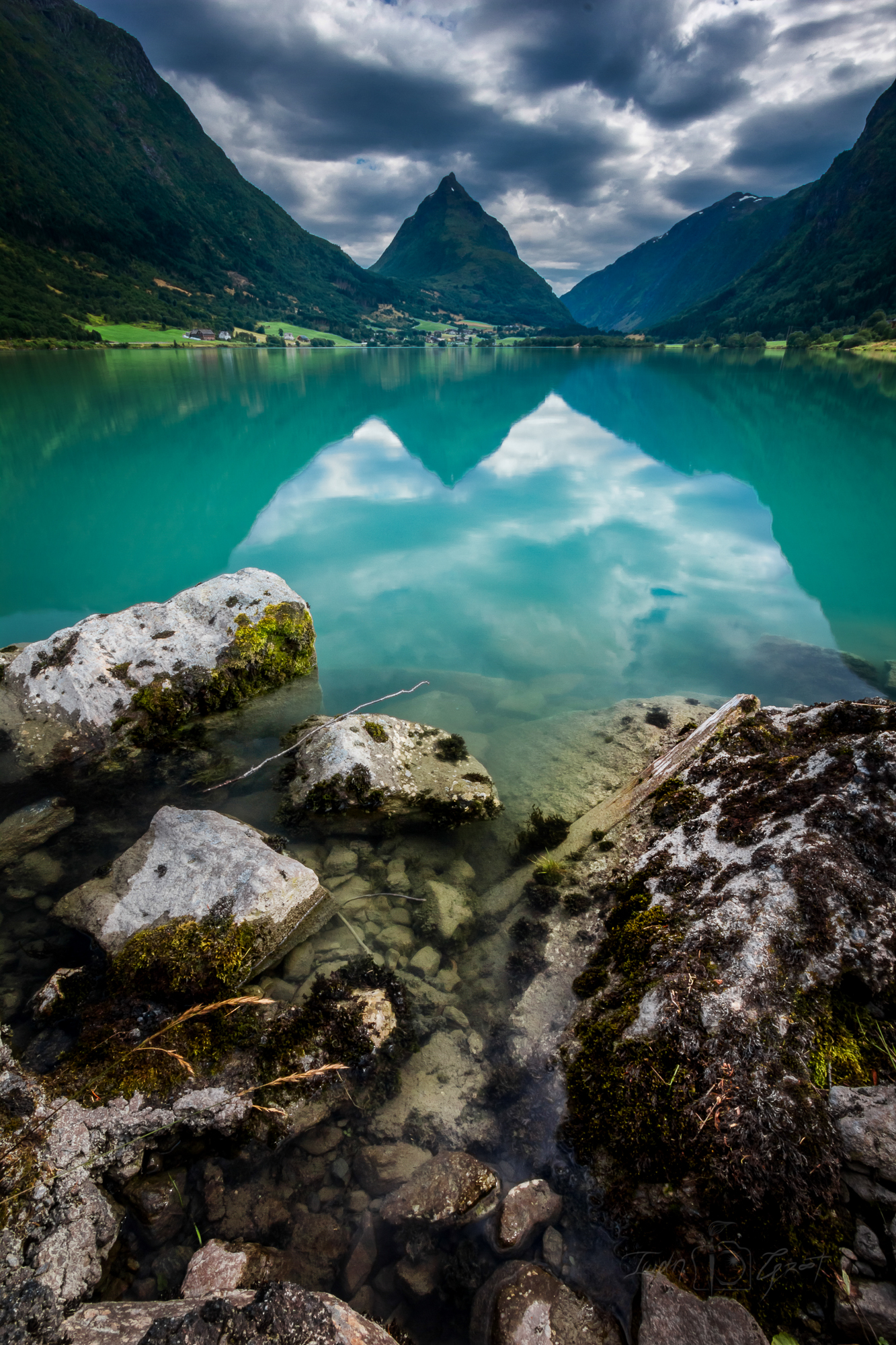
In the previous version I only used on exposure and recovered a lot in the shot, but this time I went a bit more dramatic and better quality as well.
and truer colors, where the other one ended up being a bit dull and flat light.
This is a really cool location, It would be interesting to do some starry sessions here, and I wonder what it looked like here on march 17th when the northern lights went way down south.
The special turquoise color in the water comes from the water melting off the glaciers in the area, where there are quite a bit of them.
I personally love this photo because of the pointy top of the mountain Eggenibba and the calm colorful water of Bergheimsvatnet
as well as the fossil that I saw trapped in the rock right before me.
you might seen the pattern of planks that formed the outer part of the rock, but those has rotted away while there is still one embedded in the rock that has been transformed into a fossil,
I love fossils, I guess one reason is because they are evidence of how fast things can happen and actually more likely prove the existence of the God in the Bible and how Scientist often use it to support there biased theories for own beliefs rather than seeing stuff like it is.
Shooting with a crop factor allows for more to be in focus which is a great benefit and but if I won’t a lot in focus extremely sharp Ill focus stack. Otherwise I like focusing on the foreground element most.
Phoblographer: What are some of the biggest lessons you feel you’ve learned as a landscape photographer since you’ve begun shooting?
Iwan: Timing and patience are the key. Golden hour is quite long here in Norway as well as blue hour so I’m a bit more flexible than if I were shooting in the tropics but that tiny period of time between golden hour and blue hour which I call “Pink Minutes” literally lasts a few minutes usually less than 5. So if that is the mood I want for a shot timing is crucial.

Combination of Averaging, lighten and some HDR blending.
a little bit later than the other. so a little more contrast and darker.
Hope to make a Star Trail here some time. i really like the crane on the right side of the frame. slightly different a bit tighter and some action from the cars.
Follow me here or at
https://www.facebook.com/artiwangroot
Like, Favorite, Comment, Share, Enjoy! =D
I also go out and enjoy nature for nature pleasure sake, If I don’t take time to enjoy nature without the camera I find I don’t manage to enjoy the capturing of it enough to accurately the atmosphere. So I make sure to take in the scene before I pull out the camera.
I also love the experience so sometimes I come back from a trip and don’t even got any pictures I am proud of when I come back. And that is alright, not every image needs to have amazing results, Quality counts more than quantity.
“I’ll shoot it later” usually means you won’t get shot; on the way back you might be chasing something, running from weather, too tired, the light might be worse, who knows what will make you not get the shot, but procrastinating on a small trip will usually leave it uncaptured.
One thing that nature photography has gotten me more conscience about is the environment, how fragile it is when we treat it like crap as humanity. you can always find a little piece of trash, which if I have place in my bag Ill pick it up and put it in my bag. Every bit of plastic out there might kill an animal and so much of nature is suffering because of littering even on land or in cities. So I’ve been trying to do my part of picking up trash and bringing awareness to people and using public transport. Not to mention sometimes the trash is in my shot, and I want to get rid of it =D.
Shooting outdoors a lot has also helped me understand weather, patterns, things to be careful, and being prepared for shifts in weather.
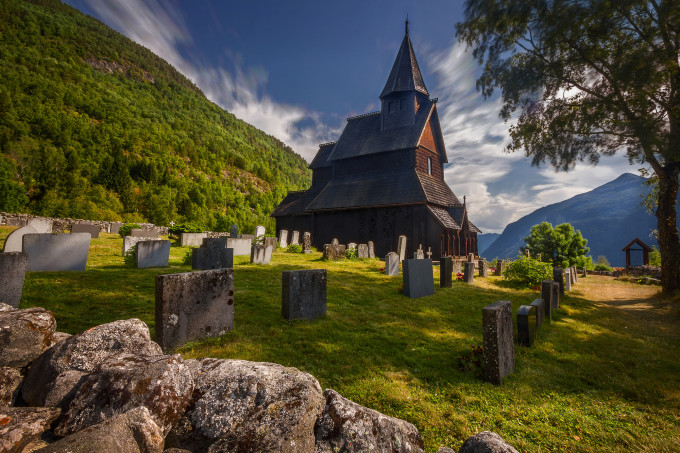
of course is best in large and black background
Information about the church is at
Which I copy and pasted the description from you to read if you wished to read. https://www.stavechurch.com/en/urnes/
you can follow me here or at
https://www.facebook.com/artiwangroot
Like, Favorite, Comment, Share, Enjoy! =D
“A stave church has been built three times on the same site here at Orneset. A hundred years would pass between the first and the third, the one we can visit today. The timber was felled in the years 1129-1130. On the long northern wall, original decorated sections from the demolished church have been used: the portal, wall planks and a corner post. The decorated gables from the same church are now covered to prevent wear and tear.
The stave churches are Norway’s unique contribution to the world’s cultural heritage. Most were built between approx. 1130 and 1350, when the Black Death brought all new building to an end. Similar churches existed elsewhere in Europe, but only the Norwegian ones have survived. Of the original approx. 1,000 churches, 28 remain. Urnes stave church is the eldest and most highly decorated of them. In 1979 it was included on UNESCO’s World Heritage List. In this description, we delve back to the time when the church was built, approx. 20 years before catholic Norway became a separate province under the Pope in Rome.
Ownership of Urnes stave church was transferred to the Society for the Preservation of Norwegian Ancient Monuments in 1880. The society’s logo is taken from the carved capitals inside the church.”
Phoblographer: You have this unique sense of symmetry between positive space and negative space in your images. As you go about composing and shooting your photos, Where did you learn this? For example,it’s present in your mountain range images and your seascape images.
Iwan: I guess it is something I’ve picked up when I painted as a child and a teenager and made paintings I always made sure to have empty spaces. if there is too much detail everywhere You loose the viewer and the image becomes to stressful and gives no relief and rest for the viewer. That is why images with less is often more. Working with Wide angles the way that can be achieved is by being so wide angle that textures and details blend together and you get more shapes and forms in the distance. And working mainly with wider angle lenses this came somewhat naturally to me through practice as I noticed my own shots.
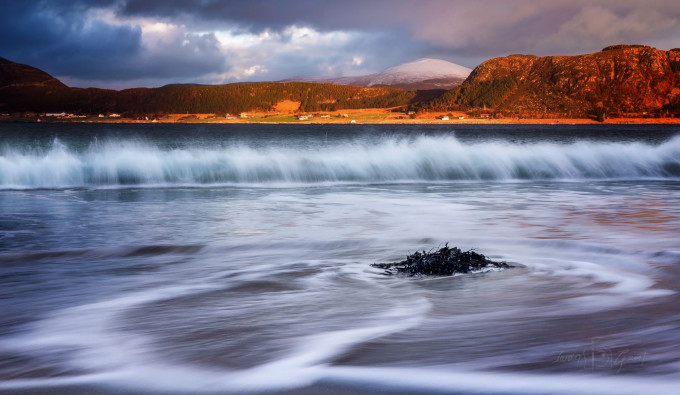
I also love waves,
This is a single exposure and darkening the top of the shot and really brings forth the nice colors you sometimes get in the sunset, at the beginning of the time at the beach I got more golden colors but towards the time I left the beach the colors turned more to the pink side. the land you see straight ahead is Haramsøya and behind that is Flemsøya/Skuløya/Longva.
I also made a logo for myself to include in my website hopefully be able to put on receipts, and maybe business cards in the future, Im also working on a timelapse from the last two years about the nights in norway and trying to make a better quality version than what I previously made.
hope you guys like this one that has been sitting on my computer for a long time without seeing the public.
It is interesting to hear your perspective on my compositions because I never thought about it the way you put it. Symmetry is something that I’m drawn to but not in the conventional sense, perfect symmetry is somewhat off-putting for me as it looks a bit unreal as well as cliche. Whenever that is a perfectly mirror like lake there is someone to photograph it where I will like a little bit of ripples or something to make the image not redundant and not just a flipped copy.
If symmetry that you see in the shots are a version of balance. I always try to balance an image as far as strong elements, weight, lights and darks, temperature color etc. Especially in my panoramas, as sometimes there might be a part of the panorama that isn’t as strong and looses the view, I will put something there, (ie, myself)
A few things to look out for I learned from Creativelive which has given me some small tips like dont have triangles in the corners. Having strong elements in the foreground is just as important as the landscape behind. But most of what I’ve learned is from experience and practice and the background in art. Various tutorials, but that is more about editing than shooting
Phoblographer: What’s your shooting preference: cloudy skies, clear skies, or bad weather? Why?
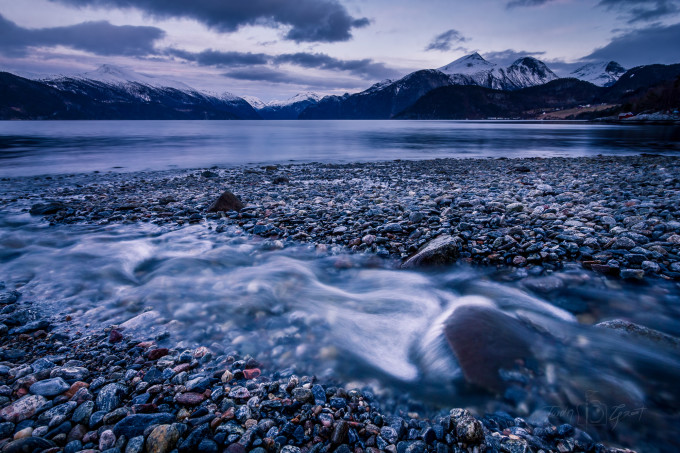
I really like settings where a little stream or river is returning to the big ocean blue, or one of its fjords, and is a visualization of H2O going around in its cycle from gas, ice and liquid during the winter. however I wouldn’t shoot what ever stream going back to a body of water, I still look for a texture, pattern or something unique in the stream.
The name of this little bay or vik is
øygardsvika between kjølåsvika, and helsemvika, around the corner of stranda.
If you follow the fjord into the right just before the pointy mountain on the right you will head towards the very famous fjord of Geiranger. if you know the name of that mountain I would like to include it in the description however don’t find a good source on the internet.
but if i got it right.
it is called grøtet which 1509m high
https://www.norgeskart.no/#9/88742/6928053
Iwan: I generally don’t go out to shoot unless there is something cool in the skies, I wouldn’t go in the middle of the day to shoot landscapes if it is was bright and sunny with clear skies. The light is too harsh in that situation as well as the sky is too boring, of course there might be exceptions to my rules. So for shots in the day time and sunrises or sunsets I look for clouds, and sometimes I like for a specific cloud formation. For example if the horizon is clear for clouds and yet clouds above the horizon or in the sky above me there is likely going to be a couple minutes with hot pink colors.
Ill go out in bad weather if I’m not scared about safety but bad weather gives some pretty nice rewarding photos. An is very exciting, the dark ominous moods give great atmospheres, the high winds allow for a lot of movement without the need of ND filters to show the movement. ND filters I find more of a pain than of a use as the extra filter often collects dust or dirt and shows up on the photos. Most of my nature shots are from when I plan a camping trip under the stars and then the landscape shots are not completely clouded over. And lead to a lot of shots at blue hour and the light isn’t so harsh.
Phoblographer: What techniques do you feel you use the most when you shoot landscapes? Long exposures seem to be one of them.
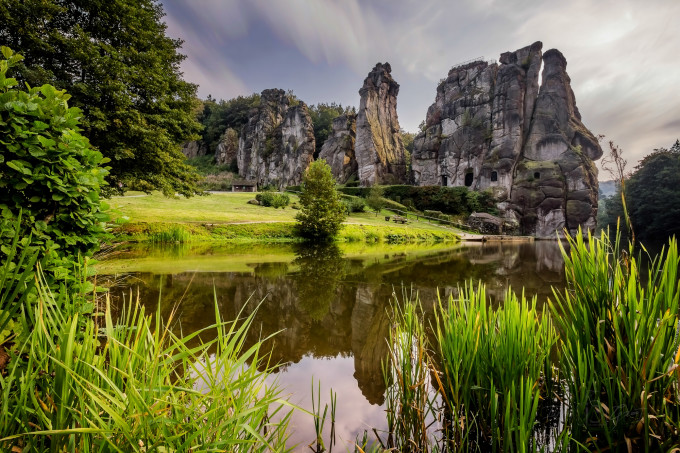
So I thought I would give it another try.
It is quite a special place, where all the other land is rolling hills and forests these rocks protrude from the earth as if being shot through the earths surface, some believe over millions of years, however makes little sense to me when the erosions of the land everywhere else is so smooth I rather believe this was suddenly and quickly made making it very unique,
in this version i made more contrast but also more selective sharpening and smoothing things out. most photos i see are across the pond so you get a nice reflection, but i liked this angle most since you get to see the rocks against the sky here.
there was a deal of mysticism and religion at a point in them wrapped around these rocks and one part of the rocks only gets direct sunlight one one day of the year, near the top of them as well.
the 31st of october if i remember right.
maybe ill visit it another time.
I really wanted to make a star trail here.
you can follow me here or at
https://www.facebook.com/artiwangroot
Like, Favorite, Comment, Share, Enjoy! =D
Iwan: I usually try to find an exposure with the balance of sharpness and length of exposure. So I shoot in Full Manual and start with the aperture I want and then find a the length of an exposure I want. I don’t mind going up to iso 400 for landscapes if I want it to be a shorter exposure but generally just stick with ISO 100. If I can introduce movement in a shot I try to as long as it isn’t a plant I’m trying to photograph that I want sharp. If I really like a scene that I think would look better as a longer exposure I use an intervalometer to take a long series of exposures. That in post Processing I can blend with the program Star Stax and average out the shots to make a seemingless long exposure shot Which gives the same effect as ND filters and have a lot easier control of the actual exposure brightness and light. As well as not having to worry about extra dust and dirt on the ND filters. This also provides me with several unique images of the scene I might not have captured otherwise and would have missed the coolest moment.
Occasionally I like freezing a moment and that is where the Sigma Art is perfect for landscape shots and freezing the action. with f1.8 I can take really fast shots even in darker settings.
I create a lot of HDR using luminosity masks in Photoshop, As well I like to implement a human in the nature shot to help with scale and bring the viewer into the shot. Since I also like to to have depth to a shot I usually try to get as close I can to the foreground element as well as going as low as I can without obscuring elements I wish to include in the background.
Phoblographer: You also tend to do lots of panoramic images. How do you ensure that all the elements of the images perfectly line up and that something doesn’t get out of sync? It’s easy for waves or something to end up looking botched sometimes.
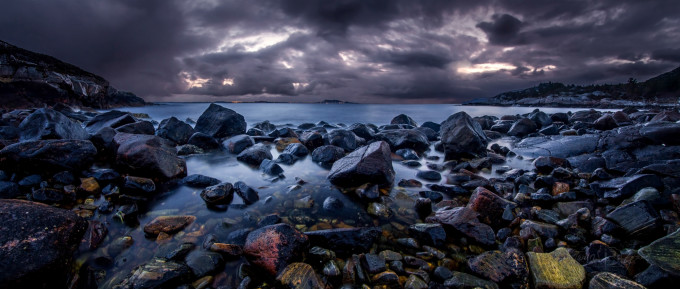
Iwan: I love making panoramas, I guess it is a sort of puzzle I like solving. the Most complicated is when I have to do HDR or milky way arches.
I haven’t had too much problems when working with waves, because a lot of the main waves that come in are pretty similar so I just have to wait for a similar wave. The Trickiest I find is high contrasts from lights to darks when there is a lot of wind that can change the position or forms of clouds. This is where a several long exposures help even things out.
There are very sophisticated programs that work well for panoramas for example like PTGui, and helps with accuracy. however I found I was spending about the same amount of time doing it manually in Photoshop and with experience accuracy comes especially when working with the milky way for night time shots. Another thing about Photoshop, It usually needs around 30 or 40 percent overlap to automatically align things, so when I am out shooting I try to achieve that much overlap so the editing will be easier.
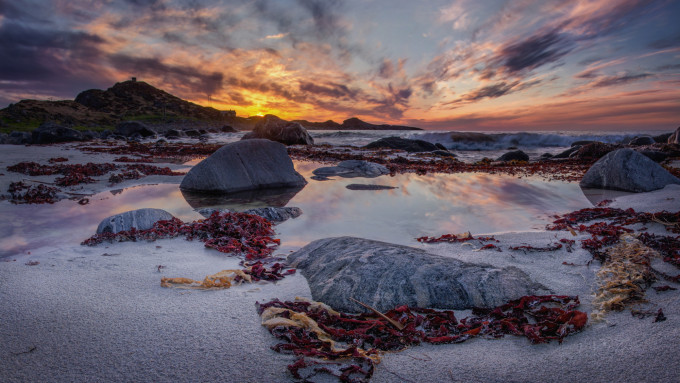
there will be quite a bit more of these shots coming
the whole time I was there the weather was perfect which gave me 8 hours of shooting time from 9 in the evening till 5 in the morning the next day.
This is from my longest shooting session probably ever, I spent 8 hours continuously behind the camera shooting away with the exception of biking to the next location to continue shooting.
Im pretty sure Ive cycled for 25kms in this session.
started at 9 and finished shooting at 5 because the color of sunset never faded, it is the point of the year where Dusk and Dawn blur together because we do not get the night anymore, a few stars made an appearance which was refreshing. would also be a great location to shoot wildlife, I saw seals, otters, and various bird species.
The biggest problem with panoramas is even lighting. especially when working with shots around twilight where the quality or strength of light is changing fast. in these situations I find working with vertical shots is better than having two rows of horizontal shots.
I have one panorama that comes to mind that was especially difficult. well a vectorama called “Love for Texture” where I used 5 tiles to make a square image, close to 30 images to include HDR, focus stacking and stitching to make a really sharp vectorama of things really close and far.
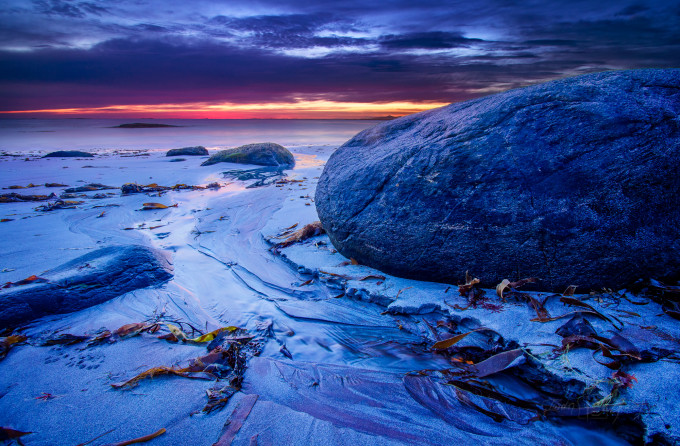
“A New Day”
This is from my longest shooting session probably ever, I spent 8 hours continuously behind the camera shooting away with the exception of biking to the next location to continue shooting.
Im pretty sure Ive cycled for 25kms in this session.
started at 9 and finished shooting at 5 because the color of sunset never faded, it is the point of the year where Dusk and Dawn blur together because we do not get the night anymore, a few stars made an appearance which was refreshing.
This is at 4 oclock when the strength of hot pink is coming forth and enveloping your soul as you are drawn to the natural color that you naturally never see.
I shot this because I love how water always flows back to the ocean and the amazing erosion patterns they make along the way. This beach has a lot of nice smooth rocks, and lovely sand. definitely want to revisit this location.
the Highlight of the night is when an otter arose from the ocean and walked across the sand and jumped on the rocks and maintaining its distance from my tent as it curiously looks for who know what. for about 15 minutes, at that moment I wish I had a Sigma 120-300mm F2.8 HSM Sport, so I could capture the magical moment of light, nature and wildlife meeting.
I also saw several seals, geese, and many different types of birds that found a nesting ground at the bird reserve out on Ulla Holmen inbetween Haramsøya and Flemsøya/Skuløya/Longva.
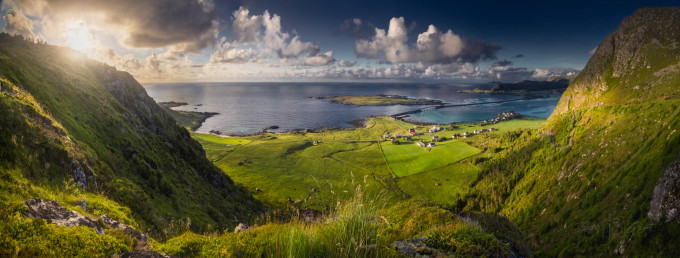
Here is another reason to love the island of Haramsøya.
I was a little scared taking this shot because I went out to the edge of a cliff, and saw some large cracks, so I was a bit curious about the stability of it.
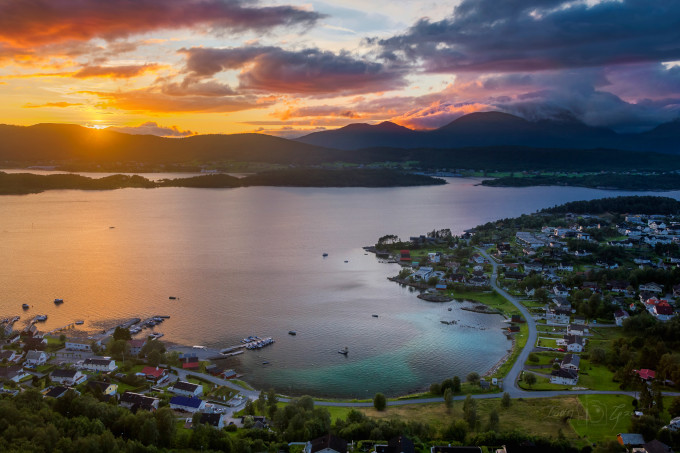
enjoy the view.
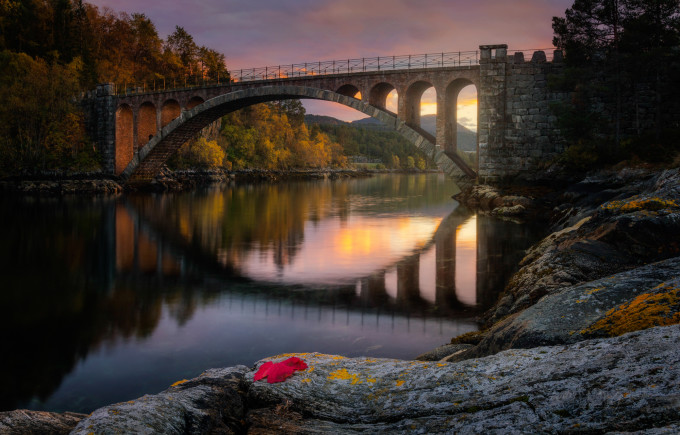
For those that follow my profile I already posted a photo from here, but it is the other bridge as this one is part of two right after one another.
The great grandfather of one of my friends was one of the ones that helped build this bridge and as a kid this was the regular bridge we used to get to the city. SCARY, expecially in the winter, you dont have a good view if there is another car coming on the other bridge as you go on. and there is pretty much place for one car as a time. and parts of it are on a slope, combined with ice can be scary. But now there is a large bridge just a hundred or two meters from this one that you can zoom by.
While walking down the path down to here I noticed a 5 point leaf with great red colors, and so I took it along to put specifically in my composition in the name of Autumn.
I did a bit more editing than im used to. but as a disclaimer most of the magical feeling is by making a HDR and darkening the whole as well as specific areas. and that was enough for most.
I should have taken one more exposure for the sunlight but realised I didnt, so I had to paint out a bit of the white in the sky.
added a bit of warmth to the sunset as well as selective vignetting.
as well as about 15 images were used to make this. combined with HDR, long exposures, and Focus stacking to get the desired effect. especially when working with such small details.
I dont know why, I love autumn and all the colors, But I dont feel as inspired to do nature photography and Feel more like “Oh I guess I should take some photos of the season.” I like my results a lot there is something about it. cant quite wrap my brain around it.
I hope yall enjoy it =D
Feel Free to Share =D
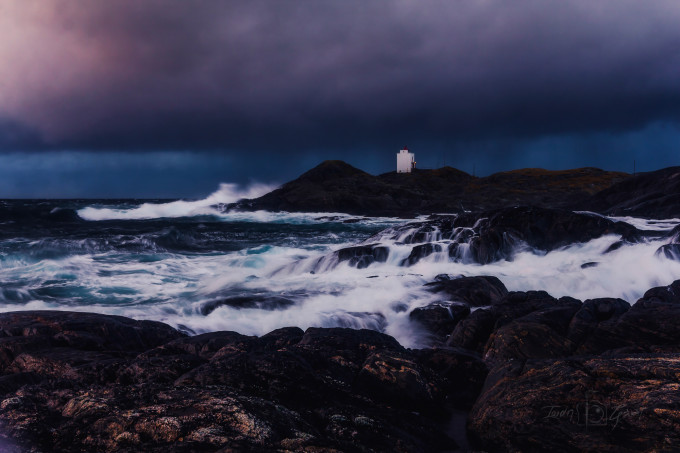
The lighthouse is called Ulla Fyr and is a place for people to be ablte to stay the night in a lighthouse, You will have to book it with Turist Foretning as they control a lot of the bookings for the lighthouses in the area. I had been here earlier in the day for a fotoshoot but returned here for the sunset to get some nice pictures of waves at the open ocean and waves by the lighthouse. Storm clouds make for great nature shots as you get shelves, sometime supercells which are hard to spot in norway, breaks in the clouds make for great colors, lots of movement and dark moody images.

